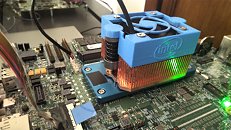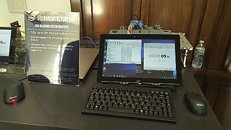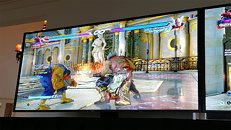- Joined
- Oct 9, 2007
- Messages
- 47,878 (7.38/day)
- Location
- Dublin, Ireland
| System Name | RBMK-1000 |
|---|---|
| Processor | AMD Ryzen 7 5700G |
| Motherboard | Gigabyte B550 AORUS Elite V2 |
| Cooling | DeepCool Gammax L240 V2 |
| Memory | 2x 16GB DDR4-3200 |
| Video Card(s) | Galax RTX 4070 Ti EX |
| Storage | Samsung 990 1TB |
| Display(s) | BenQ 1440p 60 Hz 27-inch |
| Case | Corsair Carbide 100R |
| Audio Device(s) | ASUS SupremeFX S1220A |
| Power Supply | Cooler Master MWE Gold 650W |
| Mouse | ASUS ROG Strix Impact |
| Keyboard | Gamdias Hermes E2 |
| Software | Windows 11 Pro |
Intel's upcoming "Ice Lake" die could be the company's biggest processor innovation in a decade, combining new clean-slate design "Sunny Cove" CPU cores, and a new integrated graphics solution based on the company's Gen11 architecture. "Sunny Cove" introduces significant IPC (single-thread performance) gains over "Coffee Lake," introduces new ISA instruction sets, including AVX-512; and a brand new uncore component; while the Gen11 graphics core is Intel's first iGPU to reach the 1 TFLOP/s mark. Intel demonstrated the ultra-low power "Ice Lake-U" SoC platform in its 2018 Architecture Day briefing.
This "Ice Lake-U" chip, with its TDP in the ballpark of 15 W, was shown ripping through 7-zip and "Tekken 7." With 7-zip, Intel was trying to demonstrate vector-AES and SHA-NI improving archive encryption performance by 75 percent over "Skylake." The Gen11 iGPU was shown providing a smoother gameplay than Skylake with Gen9, although the company neither mentioned resolution, nor frame-rates. Anandtech wagers it's above 30 fps.



View at TechPowerUp Main Site
This "Ice Lake-U" chip, with its TDP in the ballpark of 15 W, was shown ripping through 7-zip and "Tekken 7." With 7-zip, Intel was trying to demonstrate vector-AES and SHA-NI improving archive encryption performance by 75 percent over "Skylake." The Gen11 iGPU was shown providing a smoother gameplay than Skylake with Gen9, although the company neither mentioned resolution, nor frame-rates. Anandtech wagers it's above 30 fps.



View at TechPowerUp Main Site




